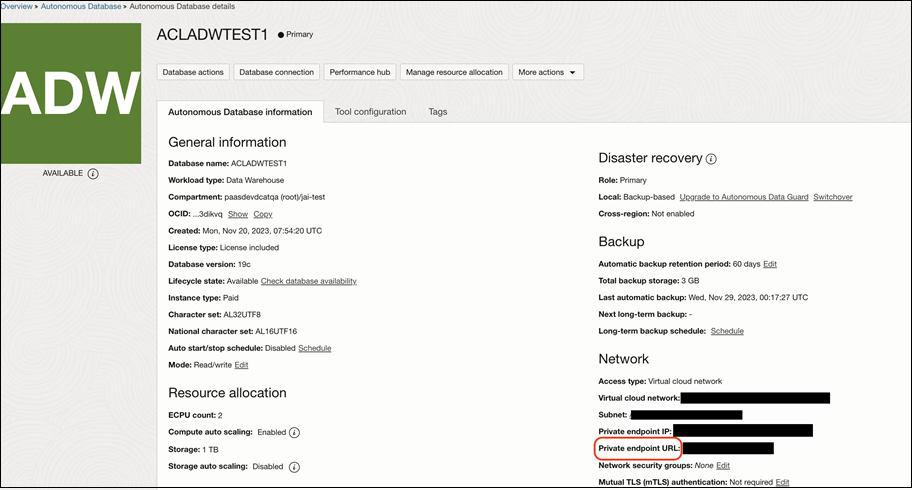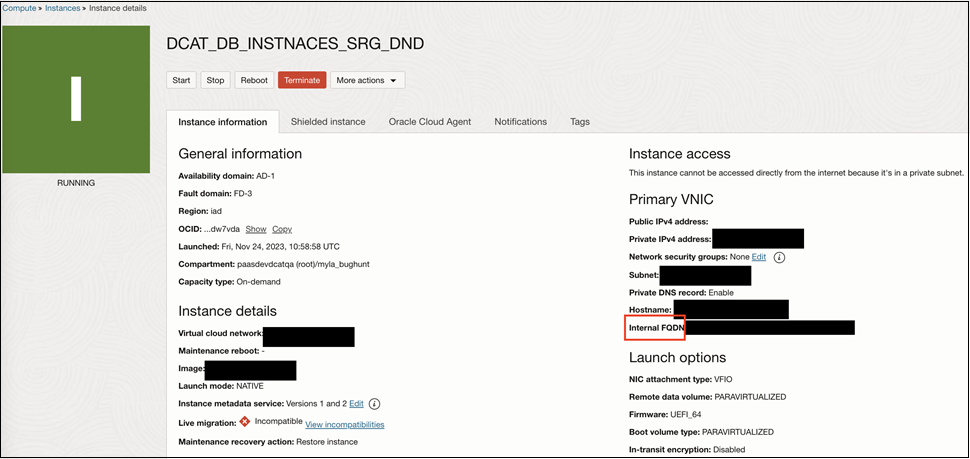Creating a Private Endpoint
Oracle Cloud Infrastructure lets you create private endpoints within your service so that you can access resources that are only available using private IPs. In Data Catalog, you create a private endpoint to configure the private network where your data source is hosted.
Prerequisites:
- The name of the Virtual Cloud Network (VCN) used to access your data source.
- The name of the subnet in the VCN.
- The list of DNS zones used to resolve the FQDNs or private IPs of the data sources that you want to harvest. While creating a private endpoint, consider these points when you enter the details for DNS zones:
- If the data sources in your private network are accessed with FQDNs and private IPs, you need the list of all the FQDNs only when you create the private endpoint.
- If all the data sources in your private network are accessed with private IPs, then while creating a private endpoint you must specify at least one resolvable FQDN or DNS such as the DNS of VCN or subnet.
- For Private Autonomous Transaction Processing (ATP) or Autonomous Data Warehouse (ADW), you must provide the private endpoint URL of ATP or ADW:

- For custom data sources running on Oracle Cloud Infrastructure virtual machines (VMs), provide the FQDN of the VM (in the Internal FQDN field as shown in the following screenshot), the domain name of the subnet in which VM is provisioned, or the domain name of the VCN.

Note
For more information about configuring an Autonomous Database with private endpoints inData Catalog, see Autonomous Database.
The private endpoint is created. The create process can take a couple of minutes. When the private endpoint is created successfully, the private endpoint is in ACTIVEstatus.Use the create command and required parameters to create a private endpoint in Data Catalog:
oci data-catalog catalog-private-endpoint create [OPTIONS]For a complete list of flags and variable options for CLI commands, see the CLI Command Reference.
Run the CreateCatalogPrivateEndpoint to create a private endpoint in Data Catalog.